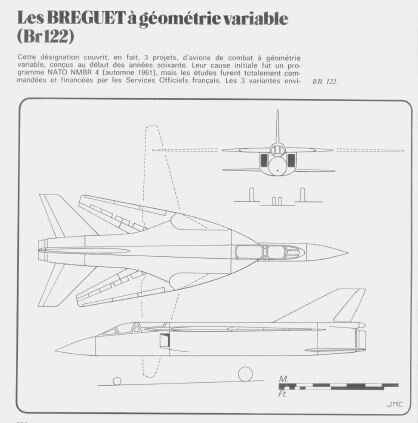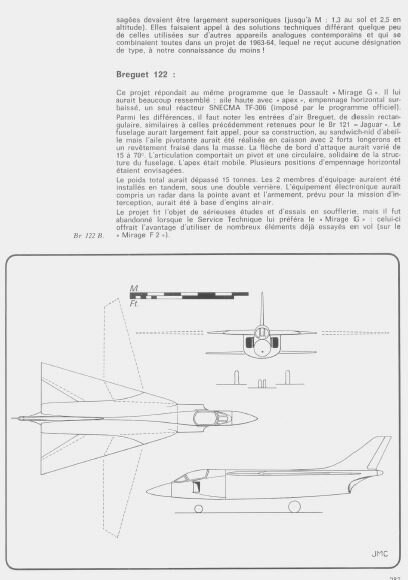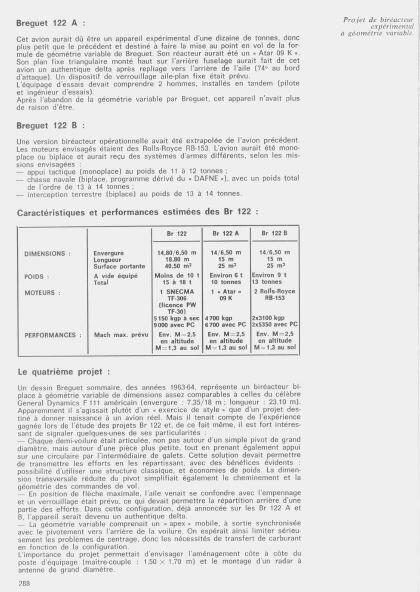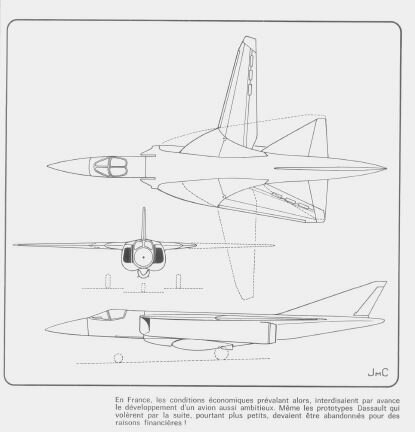Ha ha Nomysirruc you got me.
I now want all F-111s to have TF41s.

But I would say, the Navy and F-111B need the TF41 more than USAF, because carriers ops.
Still, it could be an "A-7D / E" in reverse: the Navy shoot first, the Air Force follows. But they urgently needed F-111s in Vietnam, also UK and Australia: all of them planned with TF30s. A brutal shift circa 1968 seems hard to make.
The F-111B by contrast is already hopeless, plus the Tomcat is coming: in both cases, introducing the TF41 seems easier...
----------------
There is so much potential for "better than OTL" Anglo-French programs in 1965...
Calling Liébert & Buyck to the rescue (their stupendous 2005 book on Mirage F1 and its ancestry, Volume 1)
En France, les services techniques ont lancé une série
d'études d'avant-projets d'avions à géométrie variable chez
Breguet, Dassault et Nord Aviation. Breguet s'est vu notifier
dès avril 1963 un marché de veille technique pour étudier ce
que la Nasa publie et pour suivre les démarches de l’Otan
dans le domaine de la géométrie variable; cette société a
également pour tâche d'établir un avant-projet sur le thème
du F-111 et de dégager un argumentaire justifiant l'emploi de
cette innovation: cette étude conduit à proposer un avion des
la taille du F-111 avec un fuselage très large et surtout avec
une généreuse voilure dont la flèche maximum dépasse 70 degrees.
Cette étude s'accompagne de la recommandation de construire deux prototypes probatoires de taille réduite équipés
d'un Atar 9. Le projet le plus proche du Mirage G est le Br 122
dont le dessins n'est pas sans rappeler celui du Jaguar
Néanmoins, en février 1965, le projet de Dassault est retenu.
Damn. Seems Breguet had a chance to avoid Jaguar and snatch AFVG (or something close) in the 1963-65 era.
Breguet 122 (1220) obviously is the next after the 121 (1210) better known as Jaguar.
Frack. We have now the beginning of a scenario where Breguet may snatch Mirage G / AFVG altogether - and avoid Jaguar that OTL sunk rather than helped the company, which ended digested by Dassault in steps, 1967-72...
Edit: I went chasing an older but excellent book: Les avions Breguets by the late Jean Cuny.
Shazaaam ! Breguet 122s / 1220s. In all their glory. Much like Dassault "Mirage G + number" "Breguet 122 / 1220" covered all their 1963-66 VG work, of every size: from MiG-23 to F-111, encompassing Mirage G, AFVG, Tornado and Su-24 sizes.
Dassault huge advantage that tipped the scales and send Breguet toward the British, ECAT and Jaguar: they derived the Mirage G from the ongoing Mirage F2 that flew as early as June 1966. Breguet had no such option.
This saved a lot of time and money: only 18 months to fly the "G" in November 1967.
Also, it proves that the old myth "Dassault started the Mirage G all alone to screw AFVG they didn't like" - is
bollocks.
The reality is that the French Government started VG designs at public companies, Dassault and Breguet 18 months before May 1965 agreement & AFVG: late 1963.
The AFVG was very much an unseasy and doomed compromise between (on the French side) the Aéronavale and Armée de l'Air, whose needs were actually impossible to get together.
Foch and Clemenceau could handle something as big as a MiG-23 or... a Mirage G. A 17 mt single-engine type.
But the AdA wanted something like a 23 mt Tornado... AFVG... Mirage G4... RAGEL... Mirage G8. A large twin-engine type to eventually replace the Mirage IVA. Except it could never afford it (here we go again...) just like the ACF and 4000 afterwards.
For nearly a decade (encompassing AFVG) the AdA and Aéronavale split and fought over these different VG visions. Which doomed AFVG itself, in passing.
In fact they put small and underpowered M45s on it to try and drag it down below 20 mt and keep the Aéronavale variant afloat. Just like Rafale... or Hornet later. Small turbofans = smaller type, below 20 mt so that Clems carriers could handle it.




